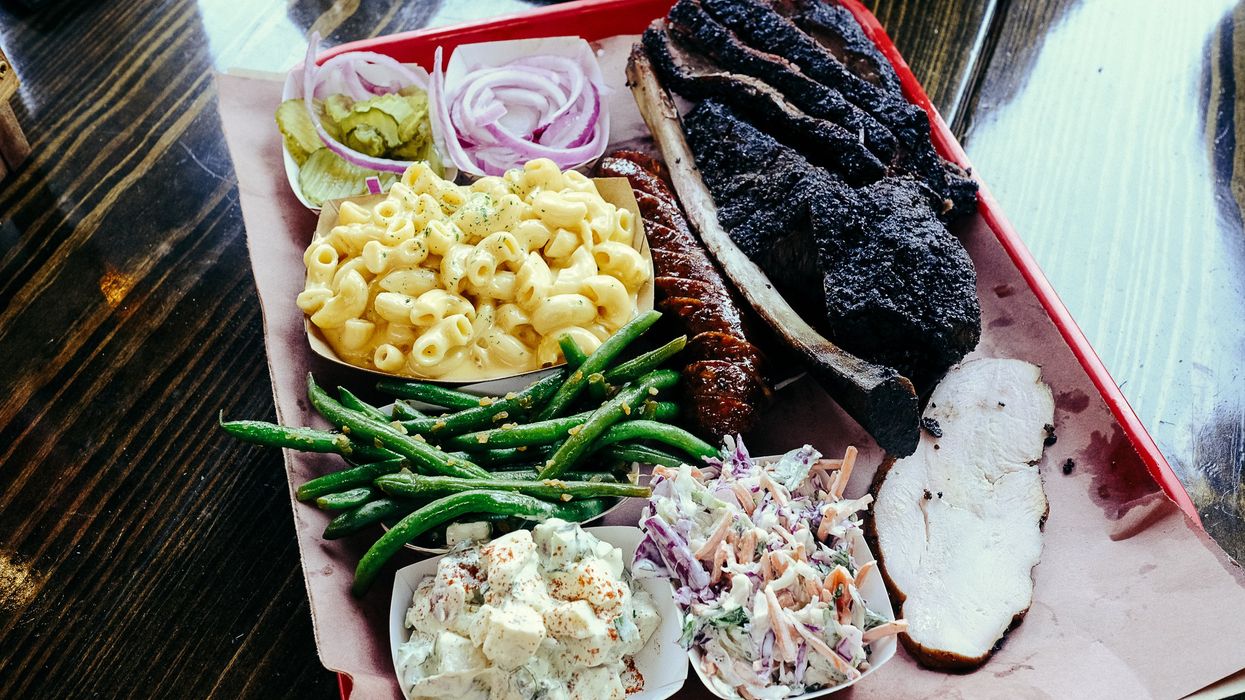
Peter Gietl

Barbecue isn’t just food—it’s a national institution. Discover the regional styles that trace the nation’s history through smoke, spice, and soul.
Mexico has tacos. Austria has Wiener schnitzel. China has dim sum. But what about the United States?
Pinpointing a single, iconic American food reveals a kind of culinary identity crisis. Sure, chocolate chip cookies are charming, but do they really belong in the same pantheon as bibimbap or churrasco? And while Thanksgiving dishes come wrapped in nostalgia, yams and turkey legs aren’t exactly the crowning jewels of global cuisine. Other contenders like hamburgers, pizza, and hot dogs are too close to their European roots to earn the title.
Ironically, America’s culinary confusion also underscores its greatest strength. Unlike countries with centuries-old singular traditions, the American table has always been a melting pot—blending both regional and global influences into something uniquely American.
Texas barbeque is a world of its own...Sauce is optional--bold, smoky meat takes center stage.
But one dish predates the United States itself. Its origins lie in ancient indigenous techniques, refined over generations by black slaves, and adapted by European settlers. It spread westward with the nation, evolving through local ingredients, flavors, and rivalries to become America’s most enduring—and proudly regional—culinary tradition: barbecue.
Barbecue is more than a method of cooking—it’s a cultural institution, especially in the South. By the time George Washington wrote about attending a “barbicue” in 1769, the tradition was already deeply embedded in American life. From the smoke pits of the Carolinas to mesquite fires in Texas, barbecue tells the story of American ingenuity, migration, and identity. Although styles vary by region, the heart of barbecue remains the same: low and slow, smoked to perfection, and steeped in tradition. Here’s a breakdown of the eight major regional styles that define American BBQ.
Carolina barbecue is pork-focused and has several unique regional differences. Eastern North Carolina features whole-hog BBQ with a thin, spicy, vinegar-pepper sauce. Western Carolina (Lexington style) sticks to pork shoulder with a tomato-vinegar sauce. South Carolina goes bold with “Carolina Gold,” a mustard-based sauce with German roots. Chopped or pulled pork, simple rubs, and vinegar-based slaws are standard here. The flavors are tangy, acidic, and bright—perfect for cutting through rich, smoked meat.
Alabama may fly under the radar, but it brings a unique twist to Southern BBQ: white sauce. This mayonnaise-based, tangy blend of vinegar, black pepper, and lemon juice is traditionally slathered on smoked chicken. Pork and ribs are also popular, often cooked over hickory and dry-rubbed with garlic and paprika. The creamy, zippy white sauce cuts through the smoke, making Alabama’s BBQ the underdog that is a must-try.
Kentucky’s western region offers a BBQ rarity: smoked mutton. Older sheep are slow-cooked over hickory and served with a bold, peppery, Worcestershire-based sauce called “dip.” Pork and chicken are also common, but mutton sets Kentucky apart. The flavor is gamey, tangy, and earthy—perfect for those looking for a deeper, more rustic barbecue experience. This Appalachian-style BBQ is rooted in frontier resourcefulness and agricultural tradition.

In Memphis, it’s all about pork. Ribs and pulled pork are slow-smoked over hickory and either served “dry” (with a rub of paprika, cayenne, and garlic) or “wet” (slathered in tangy vinegar-tomato sauce). The balance of spice and smoke creates a deep flavor that doesn’t need excess sauce. Chopped pork sandwiches topped with slaw are a local staple, making Memphis a must-visit for pork lovers.
St. Louis BBQ is rib-focused, particularly the St. Louis-style cut—spare ribs trimmed into a neat rectangle for even cooking. Unlike other styles, ribs here are often grilled (not smoked) and finished with a thick, sticky tomato-based sauce. Pork steaks, another local favorite, are doused in sauce and grilled. Sweetness and char define this style, making it a saucy, finger-licking feast for pork fans.
Kansas City BBQ is an all-meat, all-sauce experience. Everything from brisket to chicken to ribs gets smoked over hickory, heavily rubbed with spice blends, then drenched in a thick, sweet, tomato-based sauce. The city’s claim to fame is burnt ends—the oh-so-addictive charred tips of brisket with a caramelized crust. Expect tender, fall-off-the-bone textures and sticky, sweet finishes that never fail to make Kansas City a crowd-pleaser.

Texas barbecue is a world of its own, with four subregions—but brisket is the crown jewel. Central Texas prides itself on minimalist rubs (just salt and pepper) and post oak smoke. East Texas leans on saucy, chopped pork and beef, often served sandwich-style. West Texas goes “cowboy style,” cooking over direct mesquite heat. South Texas draws from Mexican barbacoa traditions, using agave leaves and wrapping meats like beef cheek. Sauce is optional—bold, smoky meat takes center stage.
Hailing from California’s Central Coast, Santa Maria BBQ is all about tri-tip beef grilled over red oak. The rub is simple: salt, pepper, garlic powder, and sometimes parsley. Unlike slow-smoked BBQ, tri-tip is cooked hot and fast, creating a smoky crust with a juicy pink center. Traditionally served with pinquito beans, salsa, and garlic bread, this BBQ is rustic, balanced, and uniquely West Coast.
Katarina Pfister is the associate editor for Frontier and the deputy editor of opinion and analysis for TheBlaze. Her work specializes in culture, politics, and philosophy. She currently resides in Vienna, Austria.
Katarina Pfister